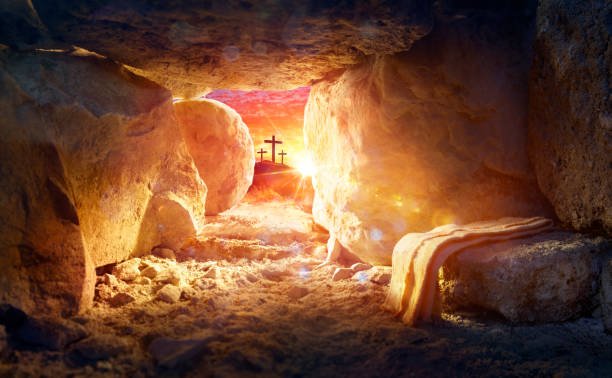“He is not here; for He is risen, as He said. Come, see the place where the Lord lay.” (Matthew 28:6)
The story of Easter begins in the pages of the Bible, where the most important event in the Christian faith is recorded—the resurrection of Jesus Christ.
This moment in history, as written in the New Testament, changed everything for believers and marked the beginning of a new hope for eternal life.
The meaning of Easter is deeply connected to Jesus’ death on the cross and His rising from the dead on the third day, just as He promised.
Even though the word “Easter” itself is not found in most Bible translations, the event it describes is found in great detail in the four Gospels—Matthew, Mark, Luke, and John.
This article will look at how Easter began in the Bible and how its meaning has carried through time.
The Resurrection Foretold
Long before Jesus died, He told His disciples that He would suffer, die, and rise again on the third day.
He spoke plainly to them, even though they did not fully understand what He meant at the time.
In the Gospel of Matthew, Jesus said:
“The Son of Man is going to be delivered into the hands of men; they will kill Him, and on the third day He will be raised to life.”
(Matthew 17:22–23)
This promise was not hidden, and it became the center of the Christian message after His resurrection.
The disciples would later remember these words and preach them boldly to others.
The Death of Jesus
The Bible tells us that Jesus was arrested, judged unfairly, and sentenced to die by crucifixion.
He carried His cross to a place called Golgotha, where He was nailed to it and left to die between two criminals.
This happened during the time of the Jewish Passover, a feast that remembered how God saved Israel from Egypt.
The Gospel of John says:
“Now it was the day of Preparation, and the next day was to be a special Sabbath.”
(John 19:31)
Jesus’ death was not an accident or mistake but part of God’s plan to bring salvation to people.
By dying, He took the punishment for sin upon Himself.
The Empty Tomb
Three days after Jesus died, some women went to visit His tomb early in the morning.
To their surprise, the stone had been rolled away, and the tomb was empty.
An angel told them the good news:
“Why do you seek the living among the dead? He is not here, but is risen!”
(Luke 24:5–6)
This event was the beginning of what Christians now call Easter Sunday.
It showed that Jesus had power over death and that His promise was true.
The empty tomb became a sign of life, hope, and victory for all who believe in Him.
Appearances After the Resurrection
Jesus did not only rise from the dead; He also appeared to many people afterward.
He met Mary Magdalene, walked with two followers on the road to Emmaus, and later showed Himself to His disciples.
Each of these meetings helped His followers believe that He was truly alive.
As written in Acts:
“After His suffering, He presented Himself to them and gave many convincing proofs that He was alive.”
(Acts 1:3)
These moments strengthened the early church and gave the apostles boldness to preach everywhere.
Why Easter Still Matters
Easter is not just a story from the past; it is still meaningful for people today.
It reminds believers that death is not the end and that there is hope through Jesus Christ.
By rising from the grave, Jesus opened the way for people to have a new life with God.
As Paul wrote to the Corinthians:
“If Christ has not been raised, your faith is futile; you are still in your sins.”
(1 Corinthians 15:17)
Because He lives, faith has meaning, and people can look forward to everlasting life.

